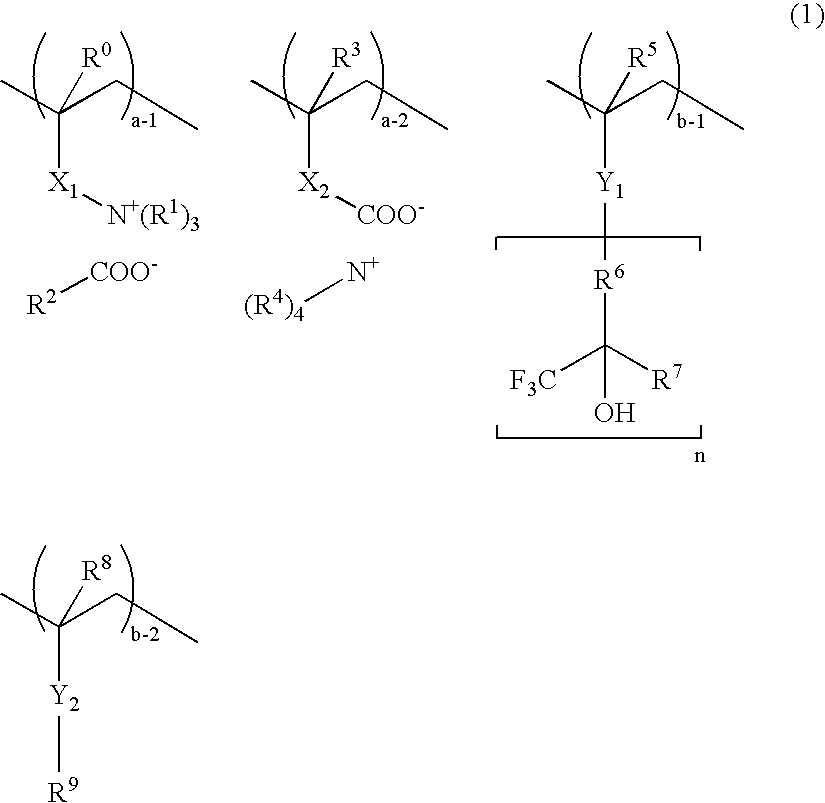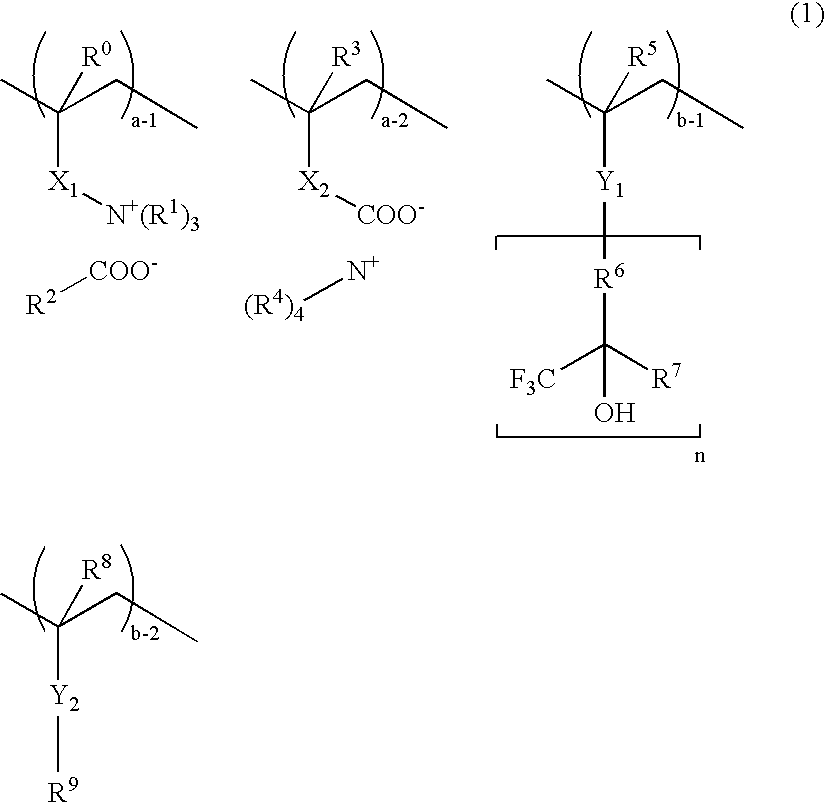Resist composition and patterning process
a composition and resist technology, applied in the field of resist compositions, can solve the problems of acid diffusion, low resist etch resistance, and high cost of scanners, and achieve the effect of preventing the pattern profile from being degraded
- Summary
- Abstract
- Description
- Claims
- Application Information
AI Technical Summary
Benefits of technology
Problems solved by technology
Method used
Image
Examples
example
[0372]Examples of the invention are given below by way of illustration and not by way of limitation. The abbreviations used herein are GPC for gel permeation chromatography, NMR for nuclear magnetic resonance, Mw for weight average molecular weight, Mn for number average molecular weight, and Mw / Mn for molecular weight dispersity. Mw and Mn are determined by GPC versus polystyrene standards. All parts are by weight (pbw).
Preparation of Polymers
[0373]Additive polymers to be added to resist compositions were prepared by combining monomers, effecting copolymerization reaction in isopropyl alcohol as a solvent, pouring the polymerization solution into hexane for crystallization, washing the polymer with hexane, repeating the crystallization and washing steps, isolating and drying. The resulting polymers were analyzed for composition by 1H-NMR and for Mw and Mw / Mn by GPC.
[0374]
[0375]
[0376]
[0377]
[0378]
[0379]
[0380]
[0381]
[0382]
[0383]
[0384]
[0385]
[0386]
[0387]
Preparation of Resist Compositions...
PUM
| Property | Measurement | Unit |
|---|---|---|
| wavelength | aaaaa | aaaaa |
| wavelength | aaaaa | aaaaa |
| size | aaaaa | aaaaa |
Abstract
Description
Claims
Application Information
 Login to View More
Login to View More - R&D
- Intellectual Property
- Life Sciences
- Materials
- Tech Scout
- Unparalleled Data Quality
- Higher Quality Content
- 60% Fewer Hallucinations
Browse by: Latest US Patents, China's latest patents, Technical Efficacy Thesaurus, Application Domain, Technology Topic, Popular Technical Reports.
© 2025 PatSnap. All rights reserved.Legal|Privacy policy|Modern Slavery Act Transparency Statement|Sitemap|About US| Contact US: help@patsnap.com



